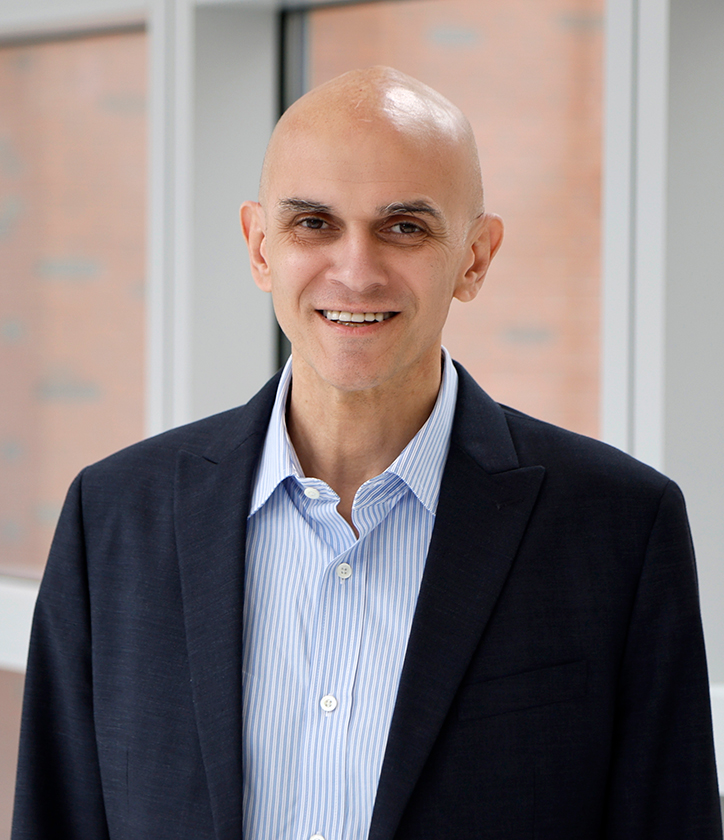 Department of Neurology
Department of Neurology
College of Medicine
480 Medical Center Dr, S2042
Columbus, OH 43210
pietro.mazzoni@osumc.edu
Education
- BS: University of California, San Diego; Physics
- MD: Harvard Medical School
- PhD: MIT; Systems Neuroscience
- Neurology Residency, Columbia University Medical Center
- Movement Disorders Fellowshipy, Columbia University Medical Center
Research Interests
I am interested in understanding motor control abnormalities that are caused by movement disorders like Parkinson's disease. Understanding motor symptoms of these disorders in terms of disruptions of normal motor control processes can guide the development of novel treatments for these symptoms, and the improvement of current treatment options. Interventions based on physical activity, for example, can be improved by understanding how PD affects sensitivity to movement effort. Technology-based treatments, like cueing for freezing of gait, might be improved if we could identify a common thread across the wide variety of contexts that trigger this symptom. A better understanding of the control signals affected by PD, finally, could improve the effectiveness of circuit-based treatments like deep brain stimulation (DBS).
In the area of physical interventions, we considered that bradykinesia may be due to a reduction in motor motivation and devised an intervention that can make an effortful movement become less effortful and might thus increase motor motivation. We devised a walking dance that consists of normal-speed walking. A preliminary study showed that PD patients can learn such a dance and that learning the walking dance might increase spontaneous walking speed.
In the area of technological interventions, we have tackled the detection of freezing of gait episodes in real time, so that we can then implement cueing on an event by event basis. A team of signal engineering colleagues devised an algorithm intended to identify FOG episodes from wearable sensor data in real time. We have been testing and refining this approach so that it can accurately detect FOG events and measure their severity.
In the area of circuit-based interventions (DBS), we examined how DBS affects different components of bradykinesia by studying the kinematics of forearm movements recorded with wearable sensors.
Background
I grew up in Italy and moved with my family to the USA as a teenager. I studied Physics in college and then attended an MD-PhD program, with Neuroscience as my PhD area. Then I completed a Neurology residency and a fellowship in Movement Disorders at Columbia University Medical Center. My fellowship included clinical training in Stanley Fahn's program and training in motor control research in Claude Ghez's lab.
My work since the completion of my training has included a combination of clinical practice in movement disorders, and research in motor control. In my clinical practice I have been evaluating and treating patients with all types of movement disorders. In my research I have been studying normal human motor control and how this control is disrupted by Parkinson's disease and Huntington's disease.
From 2001-2016 I was on the Neurology faculty at Columbia University. I established and co-directed the Motor Performance Lab with John Krakauer, where we studied human motor control and motor learning through the study of reaching and pointing movements. I treated patients with movement disorders in the Movement Disorders Division directed by Stanley Fahn.
From 2016 to 2022 I was on the Neurology faculty at Washington University in St. Louis. I carried out research on the effects of Parkinson's disease on gait in the Movement and Neurodegeneration Lab, directed by Gammon Earhart. I saw patients with movement disorders in the Movement Disorders division directed by Joel Perlmutter.
In 2022 I took my current position at the Ohio State University as co-director of the Movement Disorders Division in the Department of Neurology with Ariane Park.
Current Clinical Activities
I evaluate and treat patients with all types of movement disorders in the Center for Neuromodulation in close collaboration with my colleagues, neurologist Zach Jordan, functional neurosurgeons Brian Dalm and James Yang, nurse practitioners Clarisse Goas and Rozena Davis, nurse Michelle Starr, and neuropsychologist Barbara Boxley. The treatment modalities we offer include physical, occupational, and speech therapy; medications; botulinum toxin injections; deep brain stimulation (DBS); and focused ultrasound ablation (FUSA). Our clinical evaluations include, for selected visits, video examination review and quantitative movement analysis with wearable sensors.Current Research Projects
Detection of Freezing of Gait in Parkinson’s Disease
One of the symptoms that Parkinson disease (PD) can cause is freezing of gait (FOG): sudden temporary halting of the legs during walking. This symptom can make it impossible for PD patients to walk and can cause them to fall. Unlike many other symptoms of PD, FOG often does not respond to treatment. One obstacle to finding an effective treatment is that FOG occurs very erratically. It is often undetected during an office visit. We need a method to reliably assess FOG so that we can then accurately test whether a treatment is effective.
In this project we use wearable sensors to devise novel methods to record FOG in the clinic and at home. We process data from the wearable sensors with custom software algorithms to detect instances of FOG. These new methods will allow us to accurately assess FOG across a variety of gait-related activities, and will allow more reliable and informative testing of future treatments of FOG.
The Effect of Deep Brain Stimulation on Individual Components of Bradykinesia in Parkinson’s Disease
The term bradykinesia, in spite of its literal meaning ("slow movement"), is commonly used to refer to more than just slowing of movements. Reduction of movement amplitude and gradual decrement of speed and amplitude are also considered part of what some call the “bradykinesia complex” (BKC). In this project we studied the effect of deep brain stimulation (DBS) of the subthalamic nucleus on kinematics of hand movements. We separately examined movement amplitude, speed, and their decrement over time in a repetitive hand pronation-supination task. These results will help us understand the aspects of motor control that benefit from DBS treatment.
